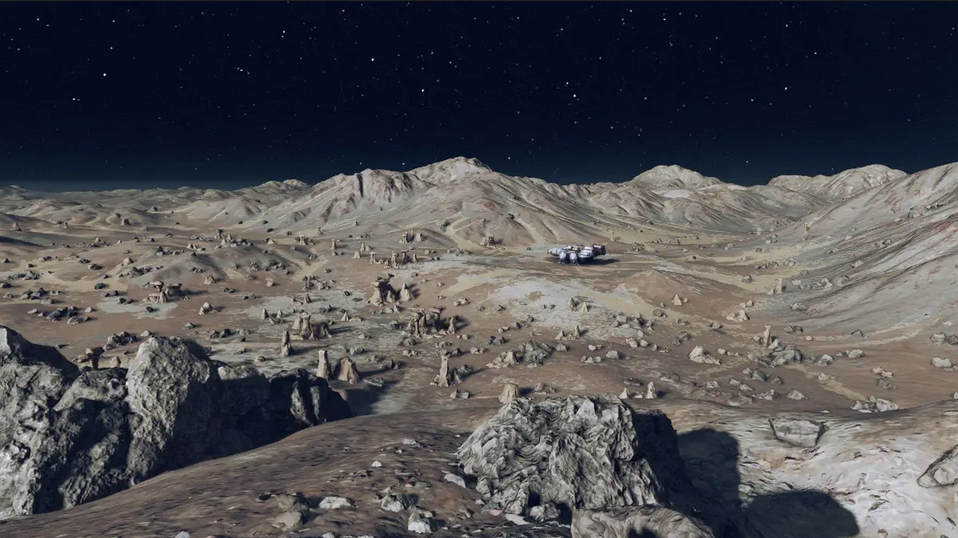NASA's Voyager finally phoned home with a device unused since 1981
At 15.4 billion miles away from Earth in interstellar space,关键字3 Voyager 1won't last much longer.
In fact, NASA's flight engineers may have thought the 47-year-old mission had finally kicked the bucket when the uncrewed spacecraft recently went quiet. The probe had shut off its main radio transmitter for communicating with mission control.
Voyager's problem began on Oct. 16, when flight controllers sent the robotic explorer a somewhat routine command to turn on a heater. Two days later, when NASA expected to receive a response from the spacecraft, the team learned something tripped Voyager's fault protection system, which turned off its X-band transmitter. By Oct. 19, communication had altogether stopped.
The flight team was not optimistic.
However, Voyager 1 was equipped with a backup that relies on a different, albeit significantly fainter, frequency. No one knew if the second radio transmitter could still work, given the aging spacecraft's extreme distance. Days later, engineers with the Deep Space Network, a system of three enormous radio dish arrays on Earth, found the signal whispering back over the S-band transmitter. The device hadn't been used since 1981, according to NASA.
"The team is now working to gather information that will help them figure out what happened and return Voyager 1 to normal operations," NASA said in a recent mission update.
SEE ALSO: NASA spacecraft has roamed billions of miles — but hasn't reached the 'edge'This Tweet is currently unavailable. It might be loading or has been removed.
Both Voyager 1and its twin, Voyager 2, have been bopping along for nearly a half-century, far beyond their original life expectancy. Launched in 1977, the pair was originally intended to study Jupiter and Saturn, their moons, and Saturn's rings. For the two-planet journey, they were built to last just five years.
After their initial success, engineers doubled their objectives to include two more giant planets, Uranusand Neptune. Between the two spacecraft, they've explored four planets, 48 moons, and a host of planetary magnetic fields and rings.
In August 2012, Voyager 1 made history as it entered interstellar space, the region between stars, filled with material ejected by other stars that died millions of years ago. Voyager 1 and 2 are the only spacecraft ever to operate outside of the heliosphere, the region of space affected by the sun's constant flow of material.
 Voyager 1 launched from Earth in 1977 and is the farthest human-made object in space. Credit: NASA / JPL-Caltech
Voyager 1 launched from Earth in 1977 and is the farthest human-made object in space. Credit: NASA / JPL-Caltech Voyager 1 is speeding away from the solar system at over 38,000 mph and is the farthest human-made object from Earth. It is so far away that it takes 23 hours for a command to reach the spacecraft, and another 23 hours for mission control to hear back from it.
NASA has previously said the Voyagers generate about 4 fewer watts of power annually, limiting the number of systems the spacecraft can use. Flight controllers have occasionally turned off equipment to conserve power. The goal is to keep the two running beyond 2025, according to the agency.
Related Stories
- NASA spacecraft has roamed billions of miles — but hasn't reached the 'edge'
- NASA's getting screwy messages from interstellar space
- The best telescopes for gazing at stars and solar eclipses in 2024
- NASA refuses to let go of its aging interstellar explorer
- How a NASA nuclear rocket engine could unleash the solar system
It's not clear yet why Voyager 1's fault protection system shut off the main radio transmitter. When onboard issues occur, such as the spacecraft overdrawing its power supply, the system will automatically turn less-critical equipment off so that it can continue flying. Based on data from Voyager 1, the spacecraft should have had enough power to flip on the heater without incident.
 Voyager 1 is speeding away from the solar system at over 38,000 mph and is the farthest human-made object from Earth. Credit: NASA / JPL-Caltech graphic
Voyager 1 is speeding away from the solar system at over 38,000 mph and is the farthest human-made object from Earth. Credit: NASA / JPL-Caltech graphic Interstellar space is a high-radiation environment that nothing human-made has ever flown in before. That means the only thing the teams running the old probes can count on are surprises.
Last month the team troubleshot a thruster problem on Voyager 1. At this point in the mission, nothing is easy or guaranteed, said Voyager project manager Suzanne Dodd in a statement.
"All the decisions we will have to make going forward are going to require a lot more analysis and caution than they once did," she said.
Featured Video For You
10 mind-blowing discoveries from the James Webb Telescope
(责任编辑:遮天)
-
 不想再说爱涓子不想再说爱作词:平安/孤雁作曲:梁光榜编曲:姜山音乐工作室后期:五毒天书演唱:涓子LRC BY :吉时雨QQ 132 7269 041www.555uuu.cn ★我们都在寻找着真爱爱到
...[详细]
不想再说爱涓子不想再说爱作词:平安/孤雁作曲:梁光榜编曲:姜山音乐工作室后期:五毒天书演唱:涓子LRC BY :吉时雨QQ 132 7269 041www.555uuu.cn ★我们都在寻找着真爱爱到
...[详细]
-
BAM โชว์ผลเรียกเก็บครึ่งแรกทะลุเป้าหลังปรับโครงสร้างลูกหนี้รายใหญ่ 2,800 ลบ.
ข่าวหุ้น10:35น.2025-06-10Facebook iconFacebookTwitter iconTwitterLINE iconLineนายรักษ์ วรกิจโภคาทร ป ...[详细]
-
 6月8日晚,第十五届全国运动会足球项目女子16岁以下组比赛U16女足赛)展开1—4名排位赛,广东队凭借叶欣怡的进球,以1比0击败江苏队,顺利打进本届赛事决赛,将和上海队争夺冠军,后者以4比1战胜山东队
...[详细]
6月8日晚,第十五届全国运动会足球项目女子16岁以下组比赛U16女足赛)展开1—4名排位赛,广东队凭借叶欣怡的进球,以1比0击败江苏队,顺利打进本届赛事决赛,将和上海队争夺冠军,后者以4比1战胜山东队
...[详细]
-
Lùm xùm thịt heo C.P. Việt Nam, tờ cam kết chất lượng tại quầy hàng biến mất
Tối 9/6, PV VietNamNetghi nhận tại siêu thị Thành Đô (toà nhà Zen Tower, 12 Khuất Duy Tiến), Tops Ma ...[详细]
-
 On April 8, 2024, the moon’s shadow will completely cover the sun for around three and a half minute
...[详细]
On April 8, 2024, the moon’s shadow will completely cover the sun for around three and a half minute
...[详细]
-
 在库里受伤,当勇士最需要“枸杞曼巴”维金斯的时候,维金斯从全明星赛前就开始缺席,随后勇士队宣布维金斯将无限期缺席比赛。维金斯无限期缺席比赛,勇士队并没有给出具体的原因,当主教练科尔被询问的时候,科尔也
...[详细]
在库里受伤,当勇士最需要“枸杞曼巴”维金斯的时候,维金斯从全明星赛前就开始缺席,随后勇士队宣布维金斯将无限期缺席比赛。维金斯无限期缺席比赛,勇士队并没有给出具体的原因,当主教练科尔被询问的时候,科尔也
...[详细]
-
 Pakistan fast bowler Hasan Ali delivered a match-winning performance, taking six wickets including a
...[详细]
Pakistan fast bowler Hasan Ali delivered a match-winning performance, taking six wickets including a
...[详细]
-
 ...[详细]
...[详细]
-
 据日媒报道,女演员石原里美于5月17日通过HORIPRO官网宣布第二胎平安诞生的喜讯。事务所方面也发表声明:“本事务所旗下女演员石原里美于日前生下二胎宝宝,目前母亲和孩子都很健康。&rd
...[详细]
据日媒报道,女演员石原里美于5月17日通过HORIPRO官网宣布第二胎平安诞生的喜讯。事务所方面也发表声明:“本事务所旗下女演员石原里美于日前生下二胎宝宝,目前母亲和孩子都很健康。&rd
...[详细]
-
 近日,由省委宣传部、省文化和旅游厅、省退役军人事务厅共同主办的2025年全省红色讲解员大赛在合肥收官。大赛紧紧围绕纪念中国人民抗日战争暨世界反法西斯战争胜利80周年,着力弘扬伟大抗战精神,通过讲述红色
...[详细]
近日,由省委宣传部、省文化和旅游厅、省退役军人事务厅共同主办的2025年全省红色讲解员大赛在合肥收官。大赛紧紧围绕纪念中国人民抗日战争暨世界反法西斯战争胜利80周年,着力弘扬伟大抗战精神,通过讲述红色
...[详细]
- 潮汐守望者开服兑换码是什么 开服兑换码使用攻略
- 骑士:掠夺词条,成就逢魔
- เกิดอะไรขึ้นในสหรัฐฯ เมื่อทรัมป์สั่งปราบผู้ประท้วงในลอสแอนเจลิส
- ตลท.ใกล้ได้รอง ผจก.คนใหม่ มือไอบีจากบัวหลวง "สรวิศ ไกรฤกษ์" เต็งจ๋าขึ้นแท่น : อินโฟเควสท์
- 不锈钢防爆地铁用公共垃圾桶厂家生产图
- ความเชื่อมั่นผู้บริโภคออสเตรเลียขยับขึ้นเล็กน้อย ผู้บริโภคยังคงระมัดระวัง : อินโฟเควสท์
- 【】民宿太空舱——FD02

 不锈钢广州桶黄绿面板表面烤漆厂家批量出货图
不锈钢广州桶黄绿面板表面烤漆厂家批量出货图 《星空》开发者:部分星球空旷是刻意设计 并不无聊
《星空》开发者:部分星球空旷是刻意设计 并不无聊 温度赋能:细节之处见真章
温度赋能:细节之处见真章 潘展乐李雯雯讲述冠军故事激扬体育精神
潘展乐李雯雯讲述冠军故事激扬体育精神 谈起玩家的游戏体验首推新开传奇网站
谈起玩家的游戏体验首推新开传奇网站
